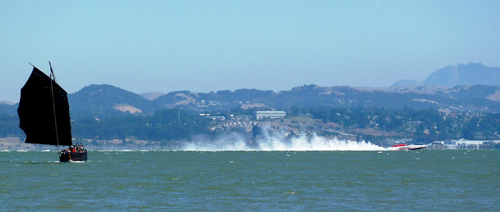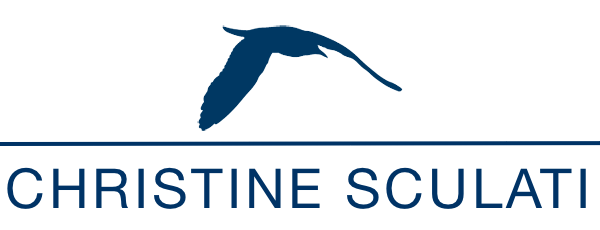What is the funding model for nonprofits hoping to save state parks?

“Grace Quan” sails out of China Camp, where past and future may be on a collision course. Photo by Glenn Brank of NorCal Yak. Click the image for the full story.
In a Foundation Center podcast, Peter Kim of the nonprofit Bridgespan Group cautions that it takes three to five years for a nonprofit to put a strong funding model in place. If an organization is under immediate financial distress, then “they have bigger priorities to deal with then stepping back to develop a strategic funding model.”
“Immediate financial distress” is how I would characterize our current state park crisis in California. The state hopes to lean on nonprofits, in part, to help keep threatened parks open while longer term funding solutions are worked out. Assemblyman Jared Huffman, D-San Rafael, will propose new ways to overhaul the park system with legislation.
Since 61 parks remain on track to close by July 1, 2012, communities and nonprofits need a plan they can follow — and fast. Should the strategy be to do whatever it takes to save the parks now and worry about finding a sustainable funding model later?
What would John Muir do in the face of California state park closures?
Ask his great, great grandson.
The Mount Shasta Herald covered a meeting on January 25, 2012, facilitated by Robert Hanna, the great, great grandson of legendary naturalist John Muir, to save Castle Crags State Park. His great, great grandfather fought to save Yosemite and create our national park system. Now, Hanna, who helped save Mono Lake Tufa State Natural Reserve, hopes to help other nonprofit groups and volunteers organize their efforts.
Hanna recommends four steps. My comments follow in italics.
- Step One: Identify Your Park Liaison. Hanna describes the park liaison as “your pipeline to Sacramento.” In my conversations with representatives of nonprofit state park cooperating associations, each one knew the regional superintendent for California State Parks because many of these organizations have been supporting parks for decades. This person connects the local park groups to the agency’s decision-makers.
- Step Two: Select a Proposal. In step two, Hanna recommends that groups identify the type of proposal that would work for their park. Those three types include:
- A donor agreement that documents a donor(s) pledge to fund the park for the time required by the parks department. Advocates behind Henry W. Coe State Park were the first to successfully pursue this strategy.
- An operator agreement that could include a coalition of groups and local government entities to operate the park. Last October, the governor signed AB42 to allow up to 20 nonprofits to help run state parks. So far many nonprofits have sent “letters of interest” to Sacramento and far fewer have sent full proposals for consideration (Valley of the Moon Natural History Association submitted their proposal to save Jack London State Historic Park in November 2011). Counties, on the other hand, already had the authority to run state parks with approved agreements. Since many county park systems are strapped for cash as well, the response has been slow. Recently, the Sonoma County Regional Parks Department gained unanimous approval from their Board of Supervisors to take over operations of Annadel State Park near Santa Rosa.
- A concession contract that could see a for-profit business running the park. This last method has raised big concerns about privatization of the parks, especially if the proposal is by a for-profit to take over an entire park, rather than one park amenity. In the case of Mono Lake, the nonprofit Bodie Foundation, whose public interest mission aligns with the mission of California State Parks, saved that park from the closure by agreeing to collect new parking fees at the lake under a concession contract.
- Step Three: Community Support. Hanna suggested reaching out to your local Chamber of Commerce, schools, business owners, government officials and the media. Hanna offered this important step, which should start before Step Two and remain ongoing. To create a strong and viable proposal for a park, advocates need to engage potential donors and secure the support of local public officials, volunteers and the community. Hanna was involved in the successful six-month grassroots effort organized by the Mono Lake Committee. In another example, a delegation of parks supporters in the Sierra foothills will hand-deliver over 10,000 letters and petition signatures to Governor Brown on February 8th in an effort to convince him and State Parks officials to remove the South Yuba River and Malakoff Diggins State Parks from the closure list.
- Step Four: Victory Dance. Hannah urged communities to celebrate their accomplishments. I agree! Today, thanks to the efforts of public officials, nonprofits and other community volunteers, nine parks have been saved from the list of 70. What will happen to the other 61 on July 1, 2012? I hope we will have reason to celebrate.
California State Parks to hold workshops
The California Department of Parks and Recreation will host a series of five workshops around the state in its continuing effort to find partners to help keep parks open. At the workshops, California State Parks will pass out workbooks with guiding principles for partnership operations. They also promise to post the workbook online at www.parks.ca.gov when it is complete.
Blog series
This is the 20th article in a series on threats to California State Parks and the search for sustainable funding.

